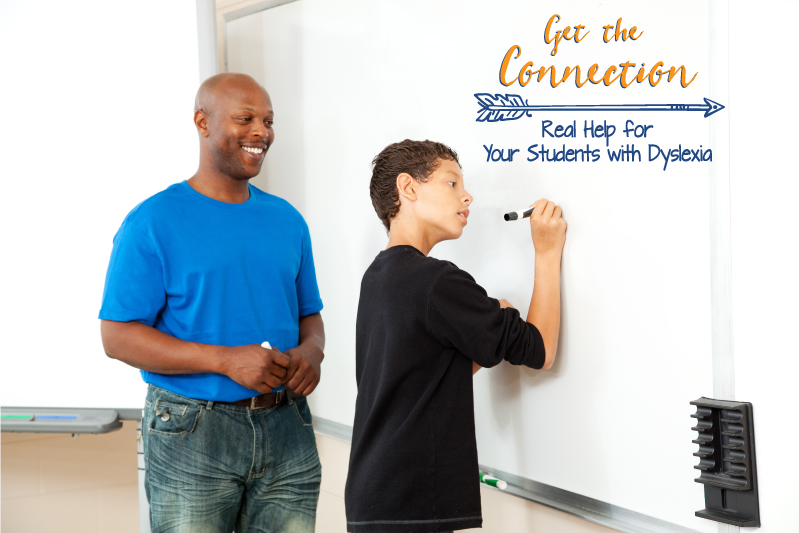Get the Connection: Real Help for Your Students with Dyslexia
When a student has been diagnosed with dyslexia, extra help typically focuses on phonics, or sounding out words, and spelling rules. Unfortunately, many students, even those who have had years of extra help, continue to struggle.
Perhaps they sound out a word eventually—but it is slow and labored. They may take so long to sound out the word that they miss the meaning of the text altogether. Or, they may substitute words when reading a paragraph. For example, they may read ‘production’ instead of ‘perfection.’
For many students, even those who have received extensive reading support, sight word recognition remains difficult. They may attempt to use phonics strategies for most words—such as reading /pee/ /oh/ /plee/ for the word ‘people.’ When they finally conquer a word, they might not recognize that same word when they encounter it in the next paragraph. Also, while a student may be able to spell words phonetically, they are unable to remember the visual patterns of words (orthography). For example, they may spell the word “friend” as “f-r-e-n-d.”
What is the missing connection for these students?
An important aspect of reading and spelling is symbol imagery, which underlies both phonological and orthographic processing. Symbol imagery is the ability to visualize letters in your mind’s eye. This connection of imagery and language is necessary for sounding out new words, as well as quickly recognizing letters and common words.
Students who read fluently, and are able to self-correct their errors, have strong symbol imagery.
Traditional reading remediation programs focus on how to sound out words as well as reading and spelling rules. While these activities have value, they do not affect the necessary imagery-language connection. They do not change how a student is processing language.
This is why reading may still be difficult for your dyslexic students, even after years of extra tutoring and accommodations.
Long overlooked in the field of reading research, symbol imagery is an important function that can now be assessed and developed. Seeing Stars develops symbol imagery as a basis for orthographic awareness, phonemic awareness, word attack, word recognition, spelling, and contextual reading fluency. Students can be taught to read and spell to their potential, regardless of their age or struggle with literacy, including those with a previous diagnosis of dyslexia.
Lindamood-Bell has partnered with many universities to examine the effects our sensory-cognitive instruction has on the brain. To read more about the studies involving dyslexia, click here.
As an educator, you can learn the steps of the Seeing Stars program at one of our upcoming workshops.








